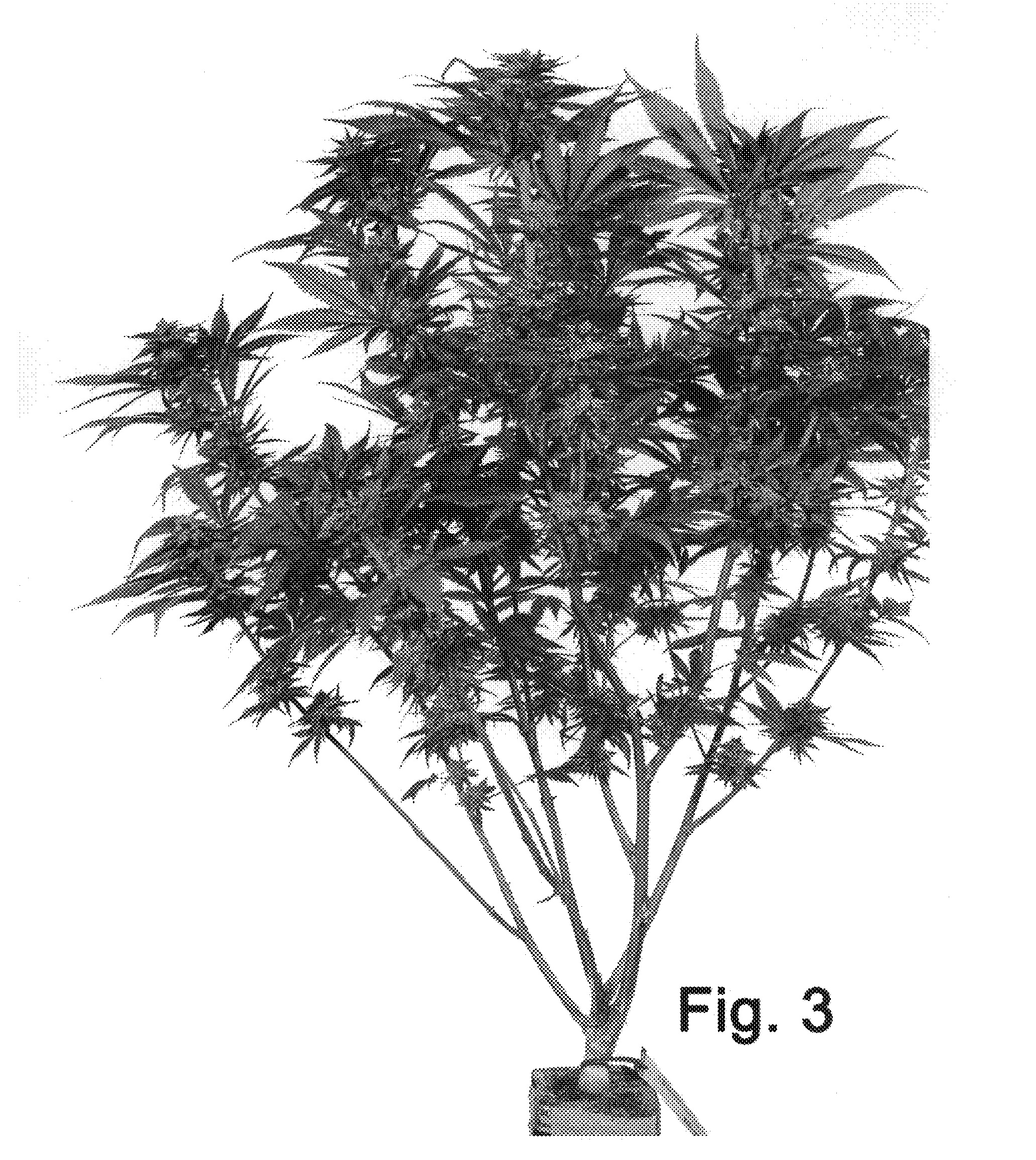U.S. Patent No. PP30,434 P3 (‘434) issued on April 23, 2019, for “Cannabis Plant Named ‘LW-BB1’.” It was issued to inventors Andrew Alfred, Ian Dumpert, and Christopher Chapdeline of Denver, Colorado, and Kasey Greenwald of Evergreen, Colorado. The applicant/assignee is Green Brands, LLC. This patent is a plant patent under 35 U.S.C. §161, which protects new and distinct cultivars of plants. According to the specification, the Latin name is hybrid Cannabis indica L. and the varietal denomination is ‘LW-BB1’ (MPEP 1601).
Figure 3 below illustrates the plant ‘LW-BB1’.

For plant patents, the utility requirement under 35 U.S.C. §101 is replaced with distinctiveness, and the ‘981 patent’s distinctiveness over the prior art as described in the specification is shown as:
Because the ‘LW-BB1’ is a clone of two other cultivars, ‘DJ Short’s Blueberry’ and ‘Black Berry Kush’, it exhibits traits similar but distinctive from the parents. Namely:
- ‘LW-BB1’ exhibits a strong apical dominance and does not branch outwards like its ‘Blueberry’ parent.
- ‘LW-BB1’ is resistant to diseases like mold and mildew.
- ‘LW-BB1’ has inflorescence is earthy, woodsy, and a subtle berry sweetness, which are not exhibited in either of the parents.
- ‘LW-BB1’ exhibits vigorous growth patterns during its vegetative state.
All plant patents have a 20 year term, and the ‘981 patent expires on June 21, 2037 (MPEP 2701).
The Cooperative Patent Classification is A01H (new plants or processes for obtaining them; plant reproduction by tissue culture techniques).
The ‘434 patent is only the second plant patent issued for a new cannabis cultivar. Plant patents are a unique type of patents issued by the USPTO, although only a very small number (about 1%) are actually issued each year. Keep in mind the plants not only must be distinct, but also new, which means they must invented (i.e., man-made or genetically modified), and asexually reproducible (i.e., not through seed propagation). Plant patents represent a facsinating area under U.S. patent law.
Please contact Yonaxis for more information on plant patents, or patents in general, if you have any questions.
